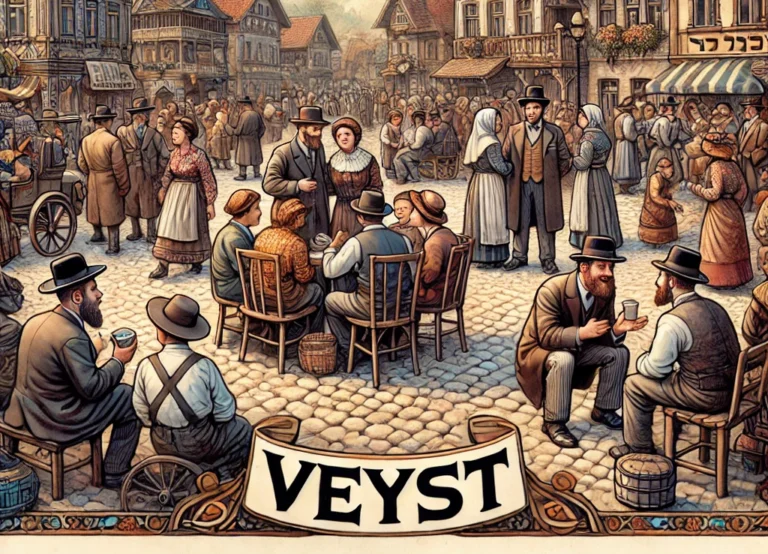
Understanding the Origin and Linguistic Roots of “Yeder Veyst”
The term “Yeder Veyst” has its roots in Yiddish, a language historically spoken by Ashkenazi Jews. Yiddish is a fascinating blend of Germanic, Hebrew, Aramaic, and Slavic linguistic elements. “Yeder” translates to “everyone” or “each one,” while “Veyst” means “knows.” Together, “Yeder Veyst” loosely translates to “everyone knows” or “it is common knowledge.” This phrase is often used to emphasize widely accepted truths or shared understanding within a community.
The Cultural Significance of “Yeder Veyst” in Daily Life
“Yeder Veyst” is not merely a linguistic expression but a cultural artifact that reflects the collective wisdom of a community. In traditional Jewish settings, this phrase might underscore communal values, shared norms, or universally accepted ideas. For instance, it might be used to highlight the importance of charity, the value of education, or a universally understood proverb.
In modern usage, “Yeder Veyst” has transcended its original context, often appearing in literature, music, and even casual conversations among people familiar with Yiddish culture. This highlights its enduring relevance and adaptability in contemporary settings.
How “Yeder Veyst” Reflects Communal Knowledge and Shared Wisdom
The phrase “Yeder Veyst” embodies the spirit of shared understanding and collective knowledge. It suggests that some truths are so evident that they require no explanation. For instance, in a discussion about the importance of honesty, someone might say, “Yeder Veyst az erlekh iz shayn” (“Everyone knows honesty is beautiful”). This reinforces the idea without needing further elaboration, emphasizing the strength of communal wisdom.
Historical Context of Yiddish Expressions Like “Yeder Veyst”
Yiddish expressions often served as a means of preserving cultural identity, especially during times of migration and diaspora. “Yeder Veyst” is a prime example of how language functioned as a unifying force. It provided a way for communities to maintain a sense of belonging and continuity, even when scattered across different countries and continents.
Modern Applications of “Yeder Veyst” in Communication
In today’s globalized world, “Yeder Veyst” finds application in a variety of contexts. It can be used humorously, seriously, or even sarcastically, depending on the tone and setting. For example:
- Humorous Use: “Yeder Veyst az di beste bagels kumen fun Brooklyn!” (“Everyone knows the best bagels come from Brooklyn!”)
- Serious Use: “Yeder Veyst az kinder darf hobn a gute bikher” (“Everyone knows children need good books”).
- Sarcastic Use: “Yeder Veyst az dos iz an emeser maiser” (“Everyone knows that’s a true story”), implying doubt or disbelief.
The Role of “Yeder Veyst” in Jewish Literature and Music
Jewish literature and music are rich with expressions like “Yeder Veyst,” which add depth and authenticity to storytelling and lyrical compositions. In literature, such phrases often appear in dialogues to reflect the characters’ cultural background. In music, they resonate with audiences by evoking shared experiences and values.
For instance, traditional Yiddish songs often include expressions like “Yeder Veyst” to underscore a moral or a lesson. These cultural touchpoints help keep the language and its idiomatic richness alive for future generations.
Learning Yiddish Expressions to Deepen Cultural Understanding
For those interested in exploring Yiddish culture, learning phrases like “Yeder Veyst” can provide a window into its history and values. These expressions are more than words; they are carriers of tradition, emotion, and communal identity. Resources such as Yiddish dictionaries, online courses, and cultural workshops can be invaluable for this purpose.
Comparison of “Yeder Veyst” to Similar Phrases in Other Languages
Every language has its version of “Yeder Veyst.” In English, phrases like “It’s common knowledge” or “Everybody knows” serve a similar purpose. In Hebrew, one might say “HaKol Yodim” (“Everyone knows”), while in German, the equivalent might be “Jeder weiß.”
These comparisons highlight the universal human tendency to emphasize shared understanding and common truths, regardless of linguistic or cultural differences.
The Importance of Preserving Yiddish and Its Expressions
Preserving Yiddish, including expressions like “Yeder Veyst,” is crucial for maintaining a connection to the past. Language is a living record of a people’s history, struggles, and triumphs. Efforts to document and teach Yiddish ensure that its rich idioms, proverbs, and expressions remain accessible to future generations.
Popular Misinterpretations and Misuses of “Yeder Veyst”
While “Yeder Veyst” is a straightforward expression, its nuances can sometimes lead to misinterpretation. For instance, those unfamiliar with its cultural context might assume it has a more literal or limited meaning. Educating people about its origins and uses helps preserve its intended richness and depth.
Exploring “Yeder Veyst” Through Modern Media and Technology
The digital age has made it easier than ever to explore and share expressions like “Yeder Veyst.” Social media platforms, online forums, and language-learning apps have become hubs for cultural exchange. Videos, memes, and posts featuring Yiddish phrases help introduce them to broader audiences, ensuring their continued relevance.
The Influence of “Yeder Veyst” on Cross-Cultural Dialogue
Expressions like “Yeder Veyst” contribute to cross-cultural dialogue by offering insights into a community’s values and perspectives. They encourage empathy and understanding, fostering connections between people of different backgrounds.
Practical Tips for Using “Yeder Veyst” in Everyday Conversations
If you want to incorporate “Yeder Veyst” into your vocabulary, start by using it in contexts where shared understanding is evident. Practice its pronunciation and learn similar expressions to deepen your appreciation of Yiddish.
Conclusion: Why “Yeder Veyst” Remains a Timeless Expression
“Yeder Veyst” is more than just a phrase; it is a testament to the enduring power of language to connect, educate, and inspire. Whether used in a traditional or modern context, it carries a depth of meaning that resonates across generations. By understanding and using expressions like “Yeder Veyst,” we honor the rich heritage of Yiddish and its role in shaping cultural identity.